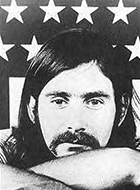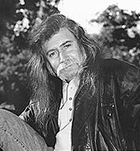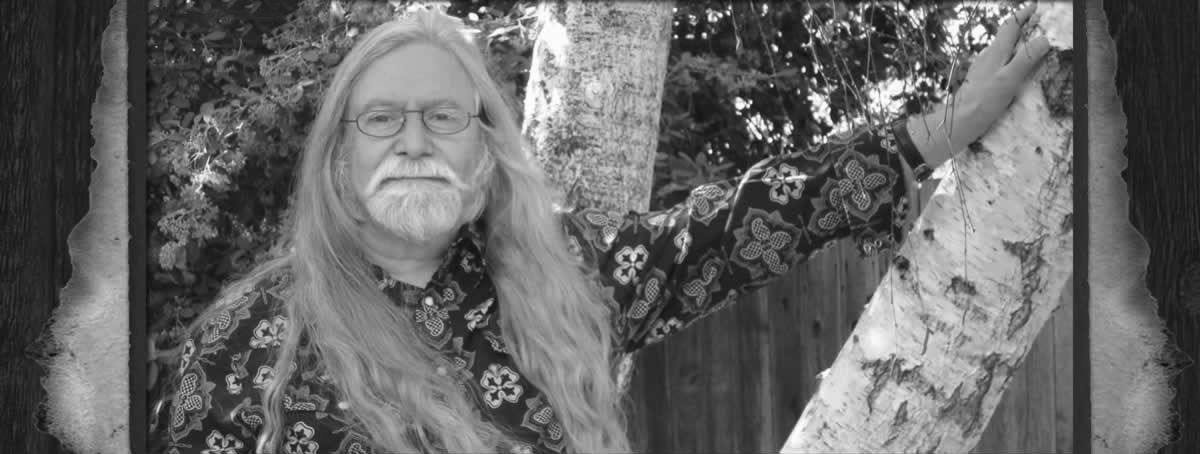The Norman Greenbaum Interview
Art Connor talks with the source of one of rock’s most well known hits.A Spirited Chat With Norman Greenbaum
By Art Connor
September 2005
 A few weeks back, an interesting discussion was taking place on the Tommy Bolin Archives message board about great classic guitar riffs and the guitarists themselves. One of them being Norman Greenbaum, and his ethereal classic, “Spirit in the Sky.” Once you hear the first few notes of that haunting riff, you immediately know what song it is.
A few weeks back, an interesting discussion was taking place on the Tommy Bolin Archives message board about great classic guitar riffs and the guitarists themselves. One of them being Norman Greenbaum, and his ethereal classic, “Spirit in the Sky.” Once you hear the first few notes of that haunting riff, you immediately know what song it is.
It’s hard to believe that it is now thirty- five years old, and like a spirit, the tune has floated in and out of our collective thoughts and dreams over the years, but it still sounds as good today as it did when it was first released in 1970. Thanks in part for it being used in such high profile movies such as Apollo 13, Remember the Titans, Contact and Ocean’s Eleven, as well as being used in quite a few national TV ads (for companies like Nike, HBO, American Express and Toyota) over the years.
Norman’s career actually started in the mid-sixties, where like many musicians back then, he paid his dues playing the coffeehouse circuit while a student at Boston University. After a move to the West coast, he formed Dr. West’s Medicine Show and Junk Band, which was described as being a “psychedelic jug band.” They actually had a minor hit single, the novelty song, “The Eggplant That Ate Chicago.”
In 1968, Norman hooked up with producer Erik Jacobsen, and was signed as solo artist to Reprise Records, along with Neil Young who was also signed to the label that year. Moving to Northern California, he began recording his first solo album, which would include his now legendary signature song, “Spirit in the Sky.” Released as single in 1970, it became a mega smash hit, reaching the number one spot in the charts throughout the world. Through much of the seventies, Norman toured with his band and released subsequent albums and singles, but none of them were ever to reach the celestial heights of “Spirit.”
 As the seventies came to a close, Norman quietly gave up performing and ventured into such fields as dairy farming, and he even had a go at being a gourmet chef. His song “Spirit” was still being played regularly on the Oldies stations throughout the country and as Norman has said, “It’s helped to pay my utility bills over the years.” As fate would have it, Hollywood came knocking in the early 90’s, and almost like a movie it self, the rest is Rock and Roll history.
As the seventies came to a close, Norman quietly gave up performing and ventured into such fields as dairy farming, and he even had a go at being a gourmet chef. His song “Spirit” was still being played regularly on the Oldies stations throughout the country and as Norman has said, “It’s helped to pay my utility bills over the years.” As fate would have it, Hollywood came knocking in the early 90’s, and almost like a movie it self, the rest is Rock and Roll history.
I was lucky to find Norman had his own website, and I emailed him one Sunday morning in late August after reading the posts and questions about his song on the Tommy Bolin Archives message board. He answered me within the hour! That’s what is so great about the Internet. One email led to another, and soon we had the beginnings of an interview. I put together some more formal questions I knew us guitar buffs would like to have answered, and sent them off to Norman. And here we are today. So read on and enjoy!
AC: Hello Norman, and thank you for taking the time to do this for us. “Spirit in the Sky” is now thirty- five years old. Not a day goes by that an Oldies station or a Classic Rock station across the country doesn’t play it at least once a day. It seems to have taken on whole life of its own, and it means so much to so many people. Did you ever in your wildest dreams ever think it would become the classic song it has become? In a ballpark estimate do you know how many copies have been sold since 1970?
NG: I really never thought it would last forever but it seems destined that it will. I was glad to have such a hit, a big one at that. VH1 said it sold 2 million copies back then. As for the total up until now, I don’t really know. In addition to the original vinyl record sales, it has been on at least 50 compilation CDs. It’s also been in 24 movies and used in about a dozen TV commercials — some big, some small. It is still amazing to me when I stop and think about.
AC: When you recorded the album at Coast Recorders Studios in San Francisco back in 1969, was it an eight track, sixteen track or more facility? The album itself is a surprise, with so many different styles. A little bit of country, blues, and soft rock and of course the heavy stuff. It seems you pulled on all of your influences for the LP. Is that how your writing style goes? Depending on the mood, the song will develop into an acoustic song, an electric song, etc. Were the songs finished prior to recording them or developed in the studio?
NG: Coast Recorders was a 16-track studio. Half inch tape, one-inch tape? Who remembers? It was just a small, quaint San Francisco studio, but unfortunately it’s no longer there. Surprisingly, it wasn’t used for too much Rock and Roll until we came in. My writing moods changed daily. I tried to make as many songs as I could different than the one before it. Some say it was my downfall. All of the songs were finished and rehearsed before recording them. Of course, there is always refinement in the studio after listening to the playbacks over and over.
AC: Now with “Spirit in the Sky”, how did that original riff come about? The legend goes that you used a Fender Telecaster modified with a built in fuzz box and Fender tube amp with lots of echo and reverb to record the song. Some of our readers want to know if you also did some creative things with the toggle switch to get that “chord going through space sound.” Do you still have that guitar? It would be considered a true collector’s piece now. What guitarists did you listen to back in the day and who do you listen to now? Who were the early giants that influenced your playing style?
NG: My heavy industrial fuzz box riff was developed over a period of time, as I experimented along the way, finally, at last getting it down. I did not slit the speakers as many have thought over the years. As for the sound, you are correct regarding the Telecaster, a Fender tube amp and echo. The fuzz box was custom built right into the guitar by a friend of mine. Just a small box with an on/off switch. I don’t remember the model number of the Telecaster. I finger picked the riff and I did use lots of reverb. There really weren’t any other gizmos used. You know to this day, I am still bound by an agreement with my producer/publisher (Erik Jacobsen) not to reveal any of the technical info of the song. Sorry about that. Unfortunately, my guitar got lost along the way of many moves — a shame really.
I don’t think I went out of my way to emulate anyone. I listened to just about everything and I guess bits and pieces stuck up in my head. People like Robert Johnson, Eric Clapton, Al Jolson, Merle Haggard, Memphis Jug Band, Cannon’s Jug Stompers, Henry Thomas, Muddy Waters, Howlin’ Wolf, various horn sections, Bob Dylan, Elvis and on and on. Now I have to admit I don’t listen to too much of anything new or recent. Really, I think I got stuck in the 70’s. I still listen to the Eagles, Joe Walsh, AC/DC, Led Zeppelin, Steely Dan, people like that.
AC: When you were touring back in the 1970’s was it technically difficult to perform the song live? What was your most memorable gig and who did you tour with?
NG: It was never hard for me to perform “Spirit” live. People actually couldn’t get enough of it and at times we did 30-minute renditions of it. Guitar players, as they came and went, in various set ups of my bands, always blended in and found it easy to naturally expound. Stroke of genius, stroke of luck I suppose. I remember playing on the same bill as The Doors and the Moody Blues, for me that was the most memorable.
AC: Speaking of guitarists, were you aware of Tommy Bolin and his music — or perhaps you may have even toured with him when he was with Zephyr? This would have been around 1970-71. Tommy also went on to play with the James Gang, at Joe Walsh’s recommendation. I don’t know if you perform live at all anymore, but every August, there is an annual Tommy Bolin Music Festival held in his home state of Iowa; there is even talk of having the concert held in Denver, which was his adopted hometown. We’d love to have you come out and play if you could.
NG: I have to say I didn’t remember much about Tommy Bolin, but I did look him up, and some of it came back. Odd how one can forget things when not actively involved. As coincidences would have it, I went to see the Eagles with Joe Walsh last month. Joe did do a couple of vintage James Gang tunes. Unfortunately I have retired from performing, as I have medical issues with my legs, broken at different times, from different accidents.
AC: With so many changes in the music industry over the past thirty years, what advice would you give to the kids trying to break into the business either as musicians or songwriters today? Finally, how would you like to be remembered in this crazy biz of Rock and Roll and in life in general?
NG: My advice to young musicians and songwriters — to quote my song “The Power”, “You either got it or you don’t!” Not much more I can say there. How would I like to be remembered? Well, having been labeled, as a one hit wonder has never bothered me because it was such a big hit and in actuality the song has continued to grow to this day. As I have said, 24 movies, 12 commercials and I forgot to mention it was number one in England for the third time last year by Gareth Gates. It was such a huge hit over there and before that, number one by Doctor & The Medics, so number one three times, and of course I was the original number one in England and just about everywhere, even though Billboard says I topped out at #3. Back then there was a second magazine called Cashbox, where there had me number one pretty much all over the world. My song has touched so many people in so many ways, musically and faith wise. I’m very big at funerals these days, and I’m not kidding! So, I would have to say I’m pretty content with how I will be remembered.
AC: Norman, on behalf of The Fuze, the Bolin Foundation and the Tommy Bolin Archives, and all of us who grew up in the 1960s and 1970s, thanks for taking the time to talk with us. And thanks for giving the world such a great song! You take care.
NG: Thank you! If you need anything additional, feel free to email me anytime.
Norman still lives quietly in Northern California, and is semi-retired now. He’s actively involved with his website at www.spiritinthesky.com. He still gets up at the crack of dawn to do the occasional morning radio interview with Oldies and Classic Rock stations throughout the country that want to talk to him about his great song “Spirit in the Sky.” Drop on in at his site to ask him about his music, buy a t-shirt or a hat or just to say a friendly hello.
Special thanks to Linda Emrich and Todd Seely here at The Fuze and to my Bolin Board Buddies for posting that original question about Norman’s guitar sound that got this whole thing started. Oh, if by chance any of you ever come across or know the whereabouts of a vintage sunburst Fender Telecaster, with a small custom built fuzz box in it, you may want to get in touch with Norman. I think he’d love to hear from you.
Photos courtesy of Norman Greenbaum.
A Spirited Chat With Norman Greenbaum ©2005 and 2017 Art Connor. All rights reserved.

ART CONNOR COMMENTS
It’s been twelve years since I interviewed Norman Greenbaum. His incredible song “Spirit in the Sky” still gets heavy and quality air play on the Oldies and Classic Rock stations throughout the country and the world. “Spirit” has even reached an entire new generation of young fans by being featured on the popular interactive music video game Rock Band, and showing up once again in some recent high-profile movies such as Guardians of the Galaxy, and Suicide Squad. ESPN also used it for their commercials for the College Football Playoffs in 2016. “Spirit” is like the musical version of the Energizer Bunny — “it just keeps going and going and going…”
The original interview appeared in The Fuze, a great online rock music journal that ran for a few years in the early 2000s, and was put together by Linda Foens (Linda Emrich back then) and Todd Seely, two very talented and devoted music people, both from the Mid-West. During its run, The Fuze had some outstanding articles and interviews with some very big established acts, but they also focused on many up and coming artists as well.
The theme of my interview with Norman back in 2005 centered on his great song and the guitar tones he used for the recording. And he did graciously answer all of my questions pretty much in full. But since then, with each passing year, the song’s mystique has grown even more so in stature, some new information has surfaced about the actual recording of “Spirit.”
Veteran guitarist Russell DaShiell is now credited for playing the lead guitar parts for “Spirit,” with him using a vintage 1961 or 62 Gibson Les Paul SG that was played through some modified Marshall Amp stacks. He was also responsible for the “beep, beeps” in the song, or as I called them — “the chord floating through space.” He did that great sound effect with some creative use of the guitar’s toggle switch, which he has stated in interviews, actually started out as a bit of joke during the sessions. That “joke” along with Norman’s unique fuzz guitar intro gave “Spirit” the industrial and spacey sound it’s now famous for.
With “Spirit” now celebrating its 47th year as one the all time best-selling “One Hit Wonder” songs, I thought it would be fun to revisit the interview once again. So, let’s jump into the DeLorean and take a trip back to September, 2005 with Norman Greenbaum!
